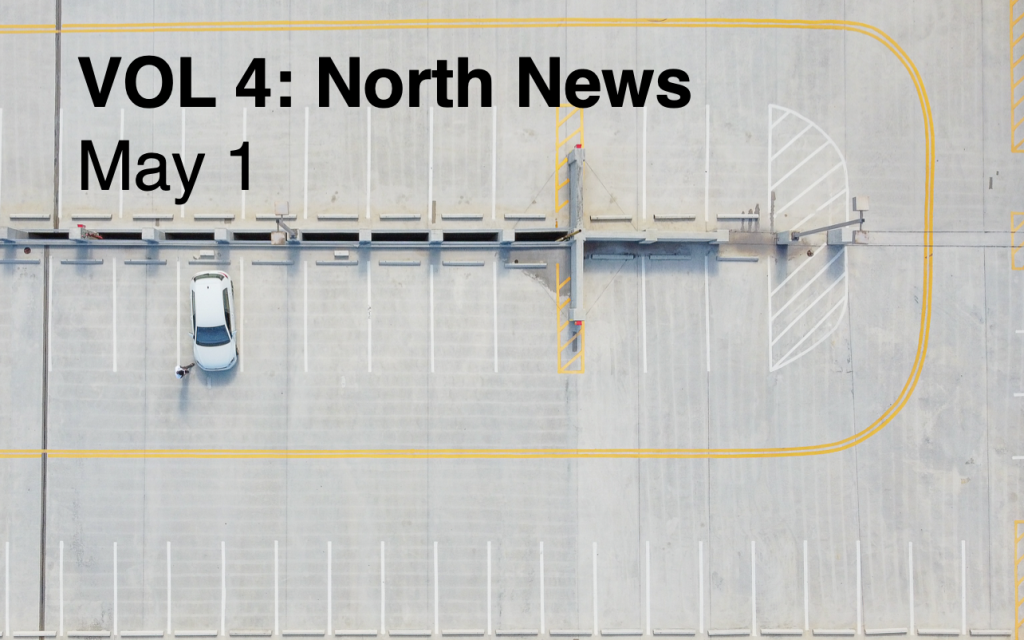North News: May 1
North News: May 1 https://northstrategic.com/wp-content/uploads/lesia-gant-f0wg3ar2rSc-unsplash-1024x763.jpg 1024 763 Sarah Stewart-Browne https://secure.gravatar.com/avatar/24a33f943366f0f09ba24e317a68c162?s=96&d=mm&r=gINDUSTRY NEWS
Consumers are looking to the future, brands should too.
When isolation began, future optimism in consumers was low. Pinterest saw searches focused on immediate needs, straying from the regular mantra of Pinners as planners. However, surprisingly quickly, Pinterest is seeing future-oriented searchings climbing in recent weeks. Andrea Mallard, CMO of Pinterest asks advertisers to consider four phases of behavior as we move forward with our consumers:
-
Phase 1: Triage & information – audience is disoriented, they need immediate help. Advertisers are starting here, but staying here too long. This stage includes auditing messaging for insensitives.
-
Phase 2: Empathy & relevance – audience is worried, and grieving the situation. Considering context here is essential, knowing that people are dealing with a lot of solemn information.
-
Phase 3 (and this is where we find ourselves today): Escapism & optimism – audience is getting restless and bored, escaping the present by looking to the future. Advertisers should shift messaging from support to inspiration, giving consumers something to look forward to.
-
Phase 4: Recovery & rebound – consumers are rebuilding. Their habits have changed permanently, and they’ll expect brands to change with them. “As purse strings tighten, consumers will prioritize brands that align to their values. Share your values. Share the values-driven actions you’ve taken. You’ll stand out when you stand up for something.”
Why this matters: The past few months have been consumed by day-to-day planning. It’s time to start thinking forward and consider how you can move with your consumers into Phase 3 and Phase 4.
How COVID-19 changed the best times to post on social media
We thought we knew our audiences’ viewing patterns. But as daily routines changed overnight and our social and work lives shifted online, it’s worth reassessing if your client’s optimal posting times have shifted. Sprout Social released updated data to show the latest trends through mid-April 2020:
Updates to Facebook times to post
-
Previously, Wednesday from 11 a.m. and 1-2 p.m. were the best times to post on Facebook. Currently, activity is more consistently high throughout every weekday.
-
Best times to post on Facebook: Monday, Wednesday & Friday from 10–11 a.m.
-
Updates to Instagram times to post
-
Similarly, activity is much more concentrated in the work day, with a distinct drop-off after 6 p.m. On the other hand, Sundays (the previous worst day to post) is now seeing high activity from about 9 a.m. – 5 p.m.
-
Best times to post on Instagram: Monday, Tuesday & Friday at 11 a.m., and Tuesday at 2 p.m.
-
Updates to Twitter times to post
-
Best times to post on Twitter: Friday 7–9 a.m., with 9 a.m.
-
Twitter saw the most consistent patterns of usage pre and post Covid, with Wednesday & Friday at 9 a.m. previously considered the top time to engage.
-
-
Bonus: the article talks about changes in message volume, brand behaviour and audience engagements if you’d like to read on…
Why this matters: Audience behaviour will continue to change over the next few weeks and months. Knowing this gives us the opportunity to keep our client’s updated on audience sentiment and behaviour, and continue to reassess strategies.
Be bold with emotional and purposeful storytelling.
Online viewing patterns are shifting, and it’s becoming a greater challenge to captivate audience attention. Think with Google states that longer form emotional storytelling is the way to win audiences’ views. Take this creative example from Clorox Company Canada:
-
Clorox Canada and ME to WE wanted to drive sales for a specially-marked reusable Brita water bottle to help give people in Africa access to clean water. In order to contextualize the issue for Canadians, they swapped the “skip ad” button on YouTube, and capitalized on society’s impatience. How? They ran a four-hour ad that followed a woman’s real-life daily walk for clean water. Instead of being able to ‘skip,’ the button said, “end her walk” with a link to purchase the reusable water bottle.
Why this matters: The click-through-rate was 12% higher than industry norms, with a 46% view-through-rate. Whether we like it or not, Covid-19 has forced people to re-evaluate their lives and what’s important to them. Meaning, the ‘fluff’ may not resonate the same way it used to. If you have a story to tell with an emotional tie to an important initiative, now is the time to choose to ‘be bold’ with a powerful message, rather than play in the grey and safe area. An article from The Drum reinforces this, stating, “businesses need to embrace the change and consider new ways to act in culturally relevant ways, otherwise brands could risk being forgotten if they remain too quiet.”
FUN STUFF
Feeling like the usual emojis just aren’t cutting it for 2020? Design firm &Walsh created a whole new set of emojis that are much more suited for this time. Download the full set here!
Julie Andrews Launches a Children’s Book Podcast
Who better than Mary Poppins herself to keep your kids entertained? Julie Andrews and her daughter have launched a weekly podcast called “Julie’s Library” where Andrews recites children’s stories. Andrews wrote, “…It is our hope that the stories and ideas we share on Julie’s Library will provide family listening pleasure, inspire meaningful conversations, and be a trusted resource for literary enjoyment and learning.” Happy listening!
Don’t forget to get some fresh air!

